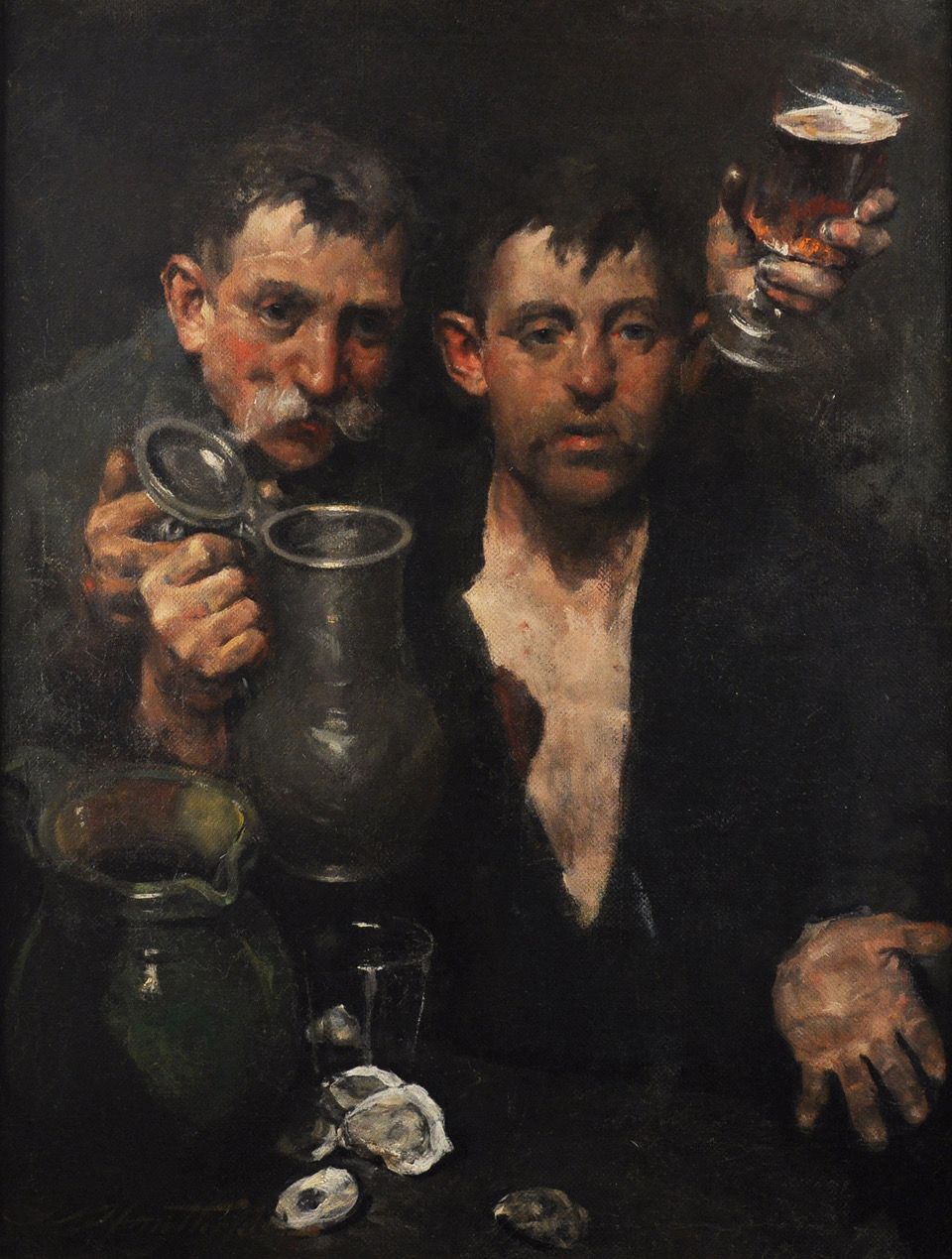To interactively explore this work, tap or click on on the artist’s name, the title, and on features in the work itself.
Oil on canvas, McMullen Museum of Art, Boston College, Gift of Alexandria & Michael N. Altman P’22, ’24, ’26, 2021.2
Tap or click on points of interest in the image to learn more ➡

Bums
The Oyster Eaters has as an alternative title Bums Drinking, underscoring the rough appearance and sooty hands of the two characters, who appear both to raise a toast and offer a seat to the viewer. The dirty fingers, unkempt hair, and threadbare clothing were staged by Hawthorne. Whatever the actual positions of the models who sat for this work, Hawthorne has portrayed his subject with both theatricality and sentimentality, conveying a convivial attitude towards what might be an otherwise shabby subject.
Pitcher
This pitcher is stoneware, a dense, opaque ceramic fired at a very high heat. By the 19th century, stoneware was mass-produced to produce a dependably strong, inexpensive vessels. The simple olive green glazing may come from ash or alkaline. As a prop, it is an appropriate signifier of a working-class establishment.
Tankard

The Apprentice, 1907. Oil on canvas, Museo Nacional de Bellas Artes, Buenos Aires.
While his paintings’ subject matter was often drawn from the streets, Hawthorne’s work was not spontaneous; instead he carefully staged his compositions with models and props. The covered pewter tankard held open by one of the men here appears identical to the one held by his Apprentice of four years later, and may in fact be the same vessel (see image).
Beer
At the time of this painting, beer had only recently become a staple for the masses, following advancements in production and the introduction of pasteurization. The increased access to cheap alcohol also fueled a resurgence of temperance movements. The Anti-Saloon League brought pressure on local legislatures to close bars. Waves of German immigration in the nineteenth century gave rise to xenophobia, and many saw beer as a marker of German culture to be avoided. Thus, Hawthorne’s subject carries political as well as class significance.
Oysters
Although oysters had long been a luxury food served as a delicacy, by the latter half of the nineteenth century American oyster production had surged enough for oysters to sell one for a penny, making them a popular source of protein for the working class. Oyster houses, also called oyster saloons, served the shellfish with beer and wine, particularly at the lunch hour. The simple presentation of the raw food underscores the men’s modest means, as does the beer they drink.

